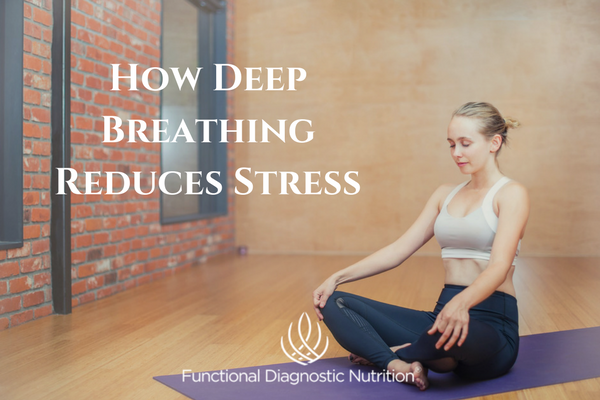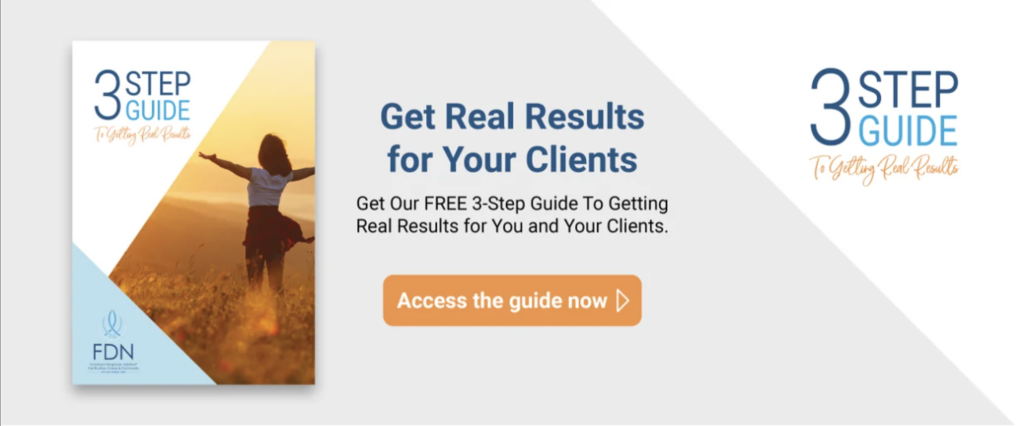Throughout our lives we take millions of breaths without thinking about it. But without proper breathing we cannot experience good health. Each of the trillions of cells we’re made of requires a steady supply of oxygen to function properly. Going without it for longer than just a few minutes will result in death! Most people however, breathe incorrectly. But learning how to use deep breathing daily can help your clients improve their health.
The importance of each breath
Breathing is more complex than most people realize. We take about 20,000 breaths each day. And we use 20 different muscles during each one. Improper muscle function can prevent oxygen intake. This can cause cell malfunction and possibly lead to disease. Trillions of cells depend on every breath for the oxygen they need to function properly and survive. That’s quite a responsibility! 20,000 repetitions of improper breathing repeated day after day can significantly impact health. Being aware of and reinforcing good breathing technique can keep people healthy and prevent disease.
Proper deep breathing technique
At the base of the rib cage sits a dome shaped sheet of muscle known as the diaphragm. It plays a significant role in proper deep breathing technique. When a person inhales, the diaphragm contracts. The thoracic cavity expands, and creates negative pressure to draw air into the lungs. But improper function in this area will decrease the capacity of the lungs, and less oxygen will be taken in. Deep breathing brings oxygen into the blood. When this happens, the brain releases endorphins, the feel-good brain chemicals. Deep breathing switches on the parasympathetic system and shuts off the stress response. In other words, it reduces stress.
Shallow Chest Breathing
Most people do not breathe deeply throughout the day. Instead they take more shallow breaths that fill only the top portion of the lungs. This chest breathing draws air into the lungs, but far less air than in a deep breath. We were designed to breathe this way in situations that require additional oxygen, such as during strenuous physical activity. But nowadays most people take quick shallow breaths through the chest regularly. Chest breathing now replaces the relaxed slow deep breaths that we were designed to take.
The Causes of Poor Breathing
Whenever a stressful situation occurs and a “fight or flight” stress response happens, the body reverts to shallow chest breathing. This helps bring in the additional oxygen the body thinks it needs to flee from danger. The body can’t differentiate life threatening danger from the common stresses of modern fast paced living. Simple chronic daily stress can create a long-term habit of breathing through the chest instead of the diaphragm. To make matters worse, many people spend most of the day sitting. This promotes a hunched posture that prevents the diaphragm from functioning properly.
It also further encourages shallow breathing. As a result, the small muscles associated with chest expansion become tight and promote forward head posture. In turn, this worsens the hunched posture that was already restricting diaphragm function. This creates a downward spiral of improper breathing and poor posture that leads to painful muscle and joint problems in addition to the oxygen deprivation. Poor nutrition can influence your breathing as well. Food sensitivities and unhealthy processed foods provoke intestinal inflammation. This inflammation signals the nervous system in a way that interferes with proper diaphragm function. Once again, this promotes the use of chest breathing to compensate.
Benefits of deep breathing
Adding regular daily deep breathing into a healing protocol should be mandatory for all of your clients. Encouraging your clients to practice deep breathing everyday will go a long way to help them heal. Some of the benefits they can expect to see include:
Reduced stress
Perhaps one of the most important benefits, lowering stress, must occur if they wish to feel better. Just a few minutes of deep breathing can shut off the stress response. It slows down the heart rate and promotes a sense of calm.
Improved sleep
If your clients struggle with stress related insomnia, deep breathing exercises may help them to catch some z’s. Have them lay in bed and focus on breathing deeply for at least 5 minutes. As the parasympathetic system kicks into high gear and shuts off the stress response, they should feel themselves getting more relaxed and sleepy.
Reduces anxiety
Whether your client suffers from anxiety or are dealing with an anxiety promoting situation, deep breathing can help. Most people breathe quickly and shallowly when in the midst of anxiety. Slowing down the breath and breathing deeply can reduce that anxiety and even prevent a panic attack from happening.
Lowers blood pressure
Breathing deeply can lower blood pressure. A 2005 study showed that taking 6 deep breaths within 30 seconds significantly reduced blood pressure levels compared to just sitting quietly.
How to breath deeply
Breathing is a simple yet powerful way for your clients to reduce their stress. Have your clients lie on their back with their hands resting on their stomach. Have them begin to slow their breathing down so that they inhale for 5-6 seconds and exhale for 5-6 seconds. As they relax their breathing, they should notice that their stomach area is expanding outward as they inhale. Deep, diaphragmatic breathing fills the lungs fully. And the expansion of the stomach area is a sign that they are breathing correctly.
Every FDN practitioner uses a D.R.E.S.S. for Health Success™ protocol with their clients. One S stands for stress management, which is one of the important healing components of the D.R.E.S.S. protocol. Learning deep breathing can be one of the simplest ways for your clients to work on lowering their stress levels so that their body can heal.








